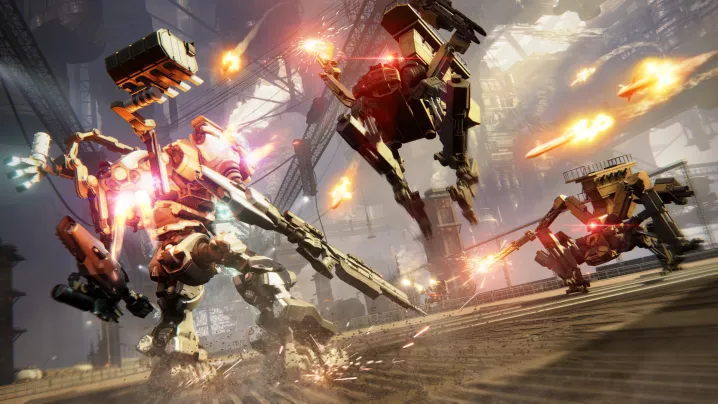
I’m going to bet that a good chunk of people reading this have never played an Armored Core game. I’d be willing to bet most haven’t even heard of Armored Core, and if they have, it’s simply that “one series FromSoftware made before Dark Souls.” And if you have played Armored Core, you don’t need me to tell you what’s in store for Armored Core VI: Fires of Rubicon.
I’m talking to everyone else — the ones who dabbled in Dark Souls, love Bloodborne, and tore through Elden Ring. I can tell you with confidence that you’re not ready for Armored Core VI. No, this isn’t Dark Souls with mechs, and for as much as FromSoftware has iterated on the core design with its now decade hiatus from the series, this is still very much an Armored Core game.
So, for my readers who don’t know what the hell an Armored Core game is, what does that look like? After spending three hours with the latest installment, I came away with a handy refresher on the mech series and all the ways it differs from FromSoftware’s more well-known design philosophies.
Assembling an Assembly
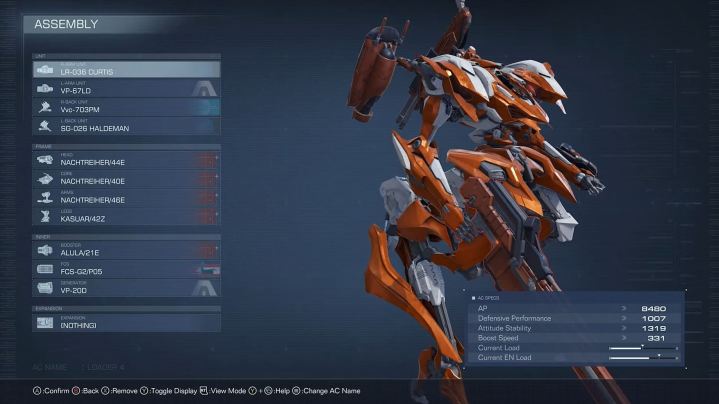
Armored Core is a mission-based mecha action game. That’s not a genre, it’s a unique description specific to Armored Core. You tackle dozens of bite-sized missions to earn money, use that money to buy new parts for your mech, and create unique builds specialized to tackle different challenges.
These builds — called your Assembly — are what make Armored Core tick. Sure, there are builds in Elden Ring and Dark Souls, but you can’t barrel your way through Armored Core VI with your cracked Rivers of Blood Katana build. In Armored Core, your build is situational. Shortly into my demo, I encountered a boss, the Juggernaut, that blocked attacks from the front. The only way to stagger the boss was to shoot it in the back. My blade and boltgun that I had equipped from the start wouldn’t cut it.
I had to adapt and swap out my boltgun with a laser gun and my sword with a bazooka. The laser gun dealt damage in a range, allowing me to hit the boss even if I didn’t have a clear shot, while the bazooka was able to dish out damage quickly once the boss was staggered. It was a great build for this boss, but it would be atrocious for taking out waves of lesser mechs.
That’s what makes Armored Core different. You’re not upgrading your mech. You’re compiling an arsenal of attachments that you can swap to change up your build to meet a new challenge. It helps that Armored Core VI lets you change your build on the death screen, as well as save different loadouts to change every aspect of your mech.
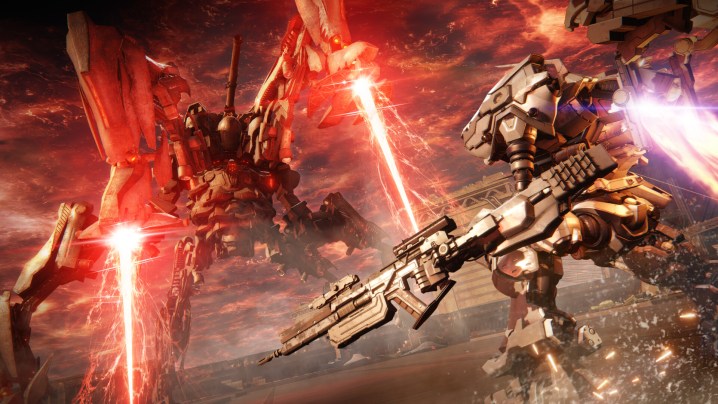
That’s one of the reasons you’re not ready for Armored Core. It’s a game that demands you engage with its dense build-crafting options, very unlike a Souls game. You can’t grab a Rivers of Blood Katana and roll through the game, nor can you dump your leveling into sorcery and attack from a distance. You have to change up your build to meet the demands of the enemies you’re facing.
Your Assembly is just as important as the moment-to-moment gameplay. Thankfully, you’re free to sell old components back at full price, using that currency to purchase new parts to trick out your mech. There’s also a careful balancing of resources; depending on your core design, you’ll have different weight and energy limits that determine what attachments you have access to.
Going omnidirectional
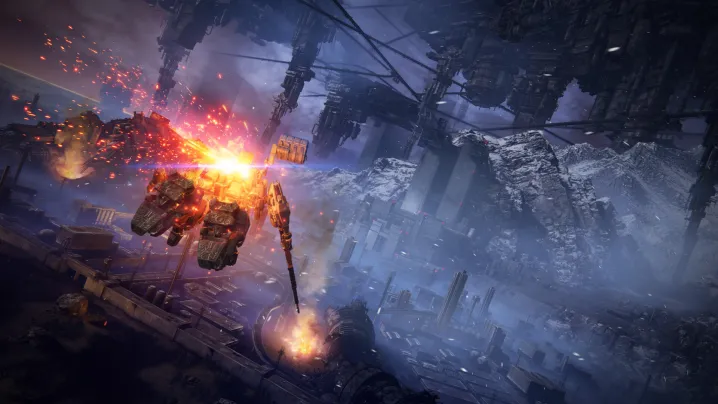
Especially for newcomers, there’s a ton to wrap your head around when it comes to Assembly. Armored Core VI does a good job guiding players in the right direction, though. True to the franchise, there’s a series of training missions that you unlock as you progress through the game, and helpful pop-ups will give you recommendations on how to change up your build if you’ve died to a challenging enemy a few times. This kind of handholding is antithetical to the design philosophy of FromSoftware for the past decade, but Armored Core VI earns the right to include such a hands-on approach to tutorials.
In the opening mission of the game, I was given a handful of tutorials on the basic mechanics and controls. A few enemies here, a few enemies there; I thought I had the basics down, ignorantly confident that this wouldn’t be a challenge. Then I came to the first boss, quickly had my proverbial stuff pushed, and reloaded my save.
I tried again and again, somehow doing worse than I did in my initial go. Then, I started learning the moves. I figured out how to avoid the boss’ opening attack, which dealt a massive blow from the jump, and how to close the gap to deal stagger damage to the boss, allowing me to take chunks off its health bar. After six or seven attempts, I took the boss down. My heart was racing. I had the same feeling that I had when taking down the many bosses in FromSoftware games from the past decade.
Without even realizing it, I was settling into the same rhythm. I was building up muscle memory with each attempt, cementing a strategy that ultimately lead to victory. No, this isn’t a Soulslike with mechs, but it’s impossible to ignore the core design DNA of FromSoftware and how it leads to that feeling when tackling big challenges.
Although that core design is intact, Armored Core VI challenges how players have interacted with its previous releases. Dark Souls, Sekiro, Elden Ring — all of these games have what the studio calls “horizontal combat.” Armored Core VI has omnidirectional combat.
It’s not a matter of dodging and parrying, taking into consideration your limited range of movement. Armored Core is all about movement. Stay on the ground too long, and you’ll be overrun with area-of-effect explosives; stay in the air too long, and you’ll be bombarded with strings of missiles. You need to be moving at all times Armored Core VI.
To help with this, the game includes two lock-on modes. One will loosely target enemies in your reticle, still giving you full control of the camera. The other will lock onto a certain enemy, still allowing you the freedom to look away and target something else. It’s important to never get locked on one enemy, though. You’ll often need to charge attacks to target several enemies at once, as well as ditch damaging one mech to target another.
It feels alien at first, especially if you’ve become familiar with FromSoftware over the past decade. Once you get your hands around the controller and your head around the controls, though, there’s nothing like it. Armored Core VI is dynamic, fluid, and constantly changing. The game’s difficulty comes in how it overwhelms you, and there’s enough of a runway in its maneuverability to give you a sense that you can overcome those odds. And even if you fail, you look damn good doing it.
Digging depth
Another aspect of the combat that makes it engaging is the stun meter. Certain attachments will deal higher damage to an enemy’s stun gauge. Break it, and you can get in direct (read: more) damage without any pushback for a short window. It’s a simple system we’ve seen over and over again, but Armored Core VI adds depth.
First, you have a stun gauge. You’re basically dead if it’s broken, especially against a boss. The depth comes in how stun builds, though. Certain weapons deal massive amounts of damage to the stun gauge that shortly falls away, while others deal minor damage, but it sticks around for a longer period of time. The same thing happens to your stun gauge, leading to situations where you feel safe despite the fact that you’re on the brink of breaking.
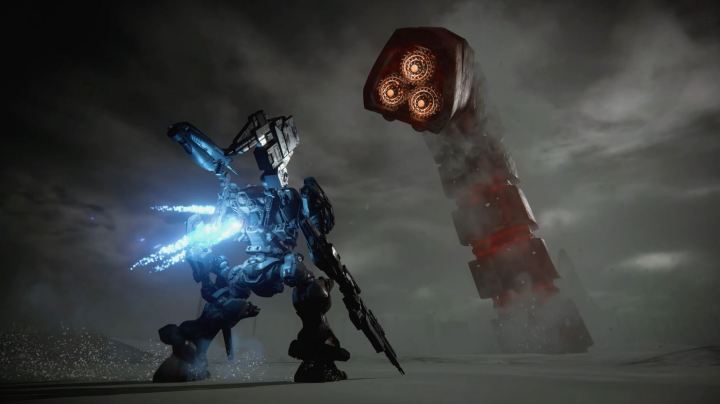
This system goes back to your Assembly. Are you able to deal a lot of stun quickly and break the meter? Do you need to deal chip damage that sticks around, methodically building up the meter? How are you going to deal damage once the stun gauge is broken? These are the questions that make build-crafting in Armored Core VI such a satisfying ride.
After playing through about three hours of the game, I can’t wait to dive back in and play more. I still have some lingering questions, though. The short mission structure lends itself to repetition, which is an issue previous games in the series have faced. The build-crafting has shortfalls, as well. It’s dense, and although I was able to find something that worked for the first few hours, it’s tough to know how fatiguing the system will become as the game progresses.
For PC players, it’s hard to overlook the terrible stuttering we saw in Elden Ring, too. The game was stable on PC based on my preview, and the developers have confirmed it’s supported on Steam Deck, but FromSoftware definitely has a rocky past on PC.
Regardless, FromSoftware fans are in for a wild ride. Armored Core has a dedicated fanbase, but the explosion of the studio as a premier AAA developer over the past decade puts makes Armored Core VI one of the most interesting games the studio has released. For newcomers, it’s best to throw your assumptions out the window. You’re not ready for Armored Core VI, and that’s the best way to play it.
Armored Core VI: Fires of Rubicon launches on August 25 for PS5, PS5, Xbox One, Xbox Series X/S, and PC.
Editors’ Recommendations
Stay connected with us on social media platform for instant update click here to join our Twitter, & Facebook
We are now on Telegram. Click here to join our channel (@TechiUpdate) and stay updated with the latest Technology headlines.
For all the latest Gaming News Click Here
